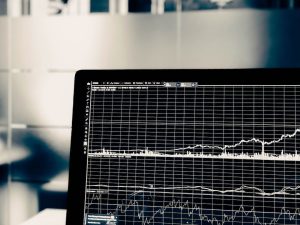The foreign exchange market, commonly known as the forex market, is one of the most dynamic and volatile financial markets in the world. The forex market is influenced by various factors such as economic data releases, geopolitical events, and central bank policies. As a result, forex traders need to be able to spot potential reversals in the market in order to make informed trading decisions. In this article, we will discuss how to spot a reversal in forex.
What is a reversal in forex?
A reversal in forex refers to a change in the direction of the price trend of a currency pair. In other words, when the price of a currency pair that has been in an uptrend starts to decline, or when the price of a currency pair that has been in a downtrend starts to rise, this is considered a reversal. Reversals are important to traders because they offer opportunities to enter or exit positions and make profits.
There are several key indicators that forex traders can use to spot potential reversals in the market. These indicators include:
1. Moving averages
Moving averages are one of the most widely used indicators in forex trading. They are used to smooth out price fluctuations and highlight the direction of the trend. Traders can use moving averages to spot potential reversals by observing the crossover of two moving averages. When a shorter-term moving average crosses above a longer-term moving average, this is known as a bullish crossover and could signal a potential reversal to the upside. Conversely, when a shorter-term moving average crosses below a longer-term moving average, this is known as a bearish crossover and could signal a potential reversal to the downside.
2. Relative Strength Index (RSI)
The RSI is a momentum indicator that measures the strength of a currency pair’s price action. The RSI ranges from 0 to 100 and is considered overbought when it is above 70 and oversold when it is below 30. Traders can use the RSI to spot potential reversals by observing divergences between the RSI and the price action. For example, if the price of a currency pair is making lower lows but the RSI is making higher lows, this could be a sign of a potential reversal to the upside.
3. Fibonacci retracements
Fibonacci retracements are a popular tool used by traders to identify potential support and resistance levels in the market. The Fibonacci retracement levels are based on the Fibonacci sequence, a mathematical sequence that occurs throughout nature. Traders can use Fibonacci retracements to spot potential reversals by observing price action at key Fibonacci levels. For example, if a currency pair is in an uptrend and retraces to the 38.2% Fibonacci level before bouncing back up, this could be a sign of a potential reversal to the upside.
4. Candlestick patterns
Candlestick patterns are a visual representation of price action that can help traders identify potential reversals in the market. There are several candlestick patterns that can signal a potential reversal, including:
– Hammer and Inverted Hammer: These patterns have long lower wicks and small bodies, and can signal a potential reversal to the upside.
– Shooting Star and Hanging Man: These patterns have long upper wicks and small bodies, and can signal a potential reversal to the downside.
– Bullish and Bearish Engulfing: These patterns occur when a small candle is followed by a larger candle that engulfs it, and can signal a potential reversal in the direction of the engulfing candle.
Conclusion
Spotting a reversal in forex is crucial for traders who want to make informed trading decisions. By using a combination of technical indicators and price action analysis, traders can identify potential reversals and take advantage of them to make profits. It is important to note that no indicator or analysis technique is foolproof, and traders should always use risk management strategies to protect their capital.





